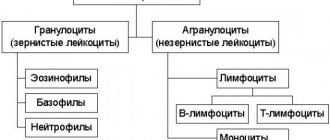The frenulum of the tongue serves to control its mobility, connect to the floor of the mouth, and regulate respiratory, chewing and speech functions. Normally, it is located along the inner surface of the tongue, starting from its middle and ending at the base of the gums of the lower incisors. A short frenulum of the tongue is scientifically called ankyloglossia, which translated from Greek means “curved tongue,” and is a fairly common congenital pathology.
In boys, the anomaly occurs several times more often than in girls, and is often hereditary.
The clinical picture of this pathology is as follows:
- the tip of the tongue is fixed to the bottom of the oral cavity and is not able to move beyond it;
- when trying to stick out the tongue, its arched deformation occurs;
- when trying to raise the tip of the tongue, the frenulum tightens and gives it a heart-shaped, forked shape;
- The tongue constantly folds into a groove with a peculiar clicking sound.
Symptoms and clinical picture of a short frenulum of the tongue in a child
Signs of a short frenulum may not be noticed by inexperienced parents or those who do not know about this pathology; usually the problem is identified by nurses and doctors in the maternity hospital. The characteristic manifestations of ankyloglossia are as follows:
- when trying to stick out the tongue, it takes an arched position;
- when the tongue is raised, the frenulum is tensioned, as a result of which the body of the organ takes on the appearance of a heart;
- the tongue is fixed at the bottom of the oral cavity and cannot fully “come out” out.
Since the symptoms of a short frenulum of the tongue in a child are not obvious, you should pay attention to the following nuances.
In the first year of life, problems arise when breastfeeding. The child cannot properly grasp the nipple with his lips, squeezes it excessively with his gums, or bites it. This leads to malnutrition, hence anxiety and frequent crying.
Later, irregular teething may occur, with displacement or initial malocclusion.
At the time of speech development, difficulties are also noted; the child has difficulty pronouncing hissing and upper articulation sounds, and may burr.
At a later age, frequent and very painful tears of the shortened ligament are added to the described troubles.
Consequences of a short frenulum of the tongue
If the short frenulum of the tongue was not trimmed in the maternity hospital, then later it can cause the following functional disorders, medical, dental and speech therapy problems:
- delayed development of the lower jaw;
- formation of an open or cross bite;
- turning the lower incisors inwards;
- bifurcation, heart-shaped tip of the tongue;
- permanent injury to the frenulum by the lower incisors;
- the occurrence of cervical caries of the lower teeth;
- incorrect pronunciation of sounds that require an upper elevation of the tongue: L, R, Ch, Shch, D, T, Sh, Zh;
- pain in the stomach, bloating, gas formation due to poor chewing of food and swallowing air while eating;
- snoring and sleep apnea.
Basic treatment methods and contraindications
Ideally, dissection of the frenulum should be performed in the first days of the child’s life, but there are 2 options for the development of events.
In infancy, the incision is made by a surgeon using scissors, which at this stage of life is absolutely painless, since there are still no nerve endings in this area. After this, the baby is applied to the breast in order to calm and prevent the development of bleeding.
How to treat a short frenulum of the tongue in older children? Also, the operation will only be more painful, since the membrane thickens over the years. Typically, frenuloplasty is performed - transfer of the site of fusion of the frenulum, followed by suturing.
When is it recommended to trim the frenulum of the tongue?
By the age of 18 months, the free tip of a child’s tongue should normally be at least 16 mm. If a child cannot lick his lips with his tongue, raise the tip of his tongue to the palate and run it along the gums, then his frenulum is of insufficient length and elasticity. Most often, in preschool age, a short frenulum of the tongue is diagnosed by a speech therapist, orthodontist or dentist due to problems with speech, bite, and teeth.
If there is slight shortening, you can try to stretch the frenulum with the help of special speech therapy exercises: “Horses”, “Accordion”, “Painter”, “Clock”, “Swing”, “Tasty Jam” and speech therapy massage. If attempts do not produce visible results or the frenulum is too short, then surgical intervention must be resorted to.
It is recommended to trim the frenulum of the tongue for children aged 5-9 years until all baby teeth are completely replaced.
In some cases, surgery can be done earlier, but only for medical reasons and a doctor’s direction.
Depending on the situation, the surgeon may use the method of dissection, excision, or relocation of the attachment site. However, the operation itself does not lead to automatic normalization of speech, but only frees the tip of the tongue from tension. Therefore, a week after the operation, the child must undergo a course of classes with a speech therapist to train and strengthen the muscles involved in raising the tongue, producing disturbed sounds and consolidating their correct pronunciation.
| Cavities are no longer a problem! Do you have caries, but are you afraid to go to the dentist? You can cure it at home! Read more >>> |
| How I whitened my teeth in a short time After 1 week, my teeth became SNOW-WHITE! I just did... Find out more >>> |
| The best remedy for getting rid of headaches Vladimir Pozner: “Because of terrible headaches, my career on TV hung by a thread” Read more >>> |
Your mark:
(votes: 6 , average: 7.33 out of 10)
How does a short frenulum affect the bite?
It is believed that this pathology primarily affects the appearance of speech defects in the child. But besides this, it entails a number of orthodontic and dental problems.
- A strongly pronounced short frenulum most often leads to aesthetic problems in the form of the formation of a diastema - a gap between the front teeth. Physiologically, it is not dangerous, but children can develop complexes that lead to psychological problems. The child is embarrassed to smile and becomes more withdrawn. Diastema is eliminated by orthodontic treatment.
- A short frenulum of the tongue can lead to more serious consequences. Ankyloglossia causes the front incisors to move forward, significantly affecting the bite. This happens gradually when, during a conversation or other actions related to the movement of the lip, the gums follow it. Tongue frenuloplasty performed at an early age in children will help prevent certain malocclusions and facilitate further orthodontic treatment.
- This defect often causes inflammatory diseases. Due to lip tension, diseases such as gingivitis, periodontitis, and sometimes increased tooth sensitivity often occur.
- It is believed that a short frenulum of the tongue in a child contributes to the development of carious changes in the cervical area of the incisors.
To avoid all these complications, you need to identify the pathology as early as possible and take timely measures to eliminate the problem.
How to detect a frenulum problem?
Without a medical examination, there are three ways to detect a short frenulum in a child.
- Conduct a visual examination of the newborn baby yourself . This method is available to all parents. You can examine the baby both in the maternity hospital and at home. Depending on the type of pathology, the child’s tongue may be immobilized and attached to the lower jaw, or it will move, but its motor activity will remain limited. In both the first and second cases, the child will not be able to stick his tongue out of his mouth. If you look closely, you can see that the tongue is connected to the lower jaw either through a connective tissue structure or through a thin film.
- Identify the problem by disrupted sucking process . If there is a short frenulum, newborn babies experience discomfort when latching onto the nipple when sucking at the breast. It is very difficult for a child to absorb milk and the sucking process drags on for a long time, while the baby continues to worry and cry even after eating.
- You can determine the presence of pathology in a child by listening to the toddler’s speech . This method of recognizing a defect is suitable for older children. The speech of such children turns out to be lisping and their word formation is impaired. If a child has been ruled out as having a cleft palate, he should undergo frenuloplasty (trimming).
How to identify pathology in a baby
Many parents ask how to determine a short frenulum. This can be determined by a neonatologist, pediatrician, or parents themselves.
If you understand that the baby cannot suckle at the breast during the first and several other feedings, he is able to grasp the nipple properly, then you should consult a doctor.
The second most common symptom of a frenulum defect is a speech defect, when children already begin to actively speak (3-4 years old).
Basically, with this pathology, children find it difficult to pronounce some consonants.
If your baby does not pronounce the sound correctly, then you need to show your baby to a speech therapist.
The most common symptoms of this pathology in babies are:
- the baby cannot touch the front, upper row of teeth with his tongue;
- the baby has difficulty moving the tongue from side to side;
- when the baby extends his tongue, its end does not change, remains the same flat, square in shape or takes on the shape of a heart;
- difficulties with feeding in infants.
It is important to realize that if difficulties are present, then someday they will need to be solved. And it’s better to do this while the little one is still very small, so it will be easier and more painless for him to endure the procedures.
How to eliminate pathology
Today, short frenulum is corrected using surgical and conservative methods. If a child is found to have a partially short frenulum, then special exercises are prescribed to cut the cords. If they do not give the expected result, then it will be necessary to trim the frenulum with a scalpel. This procedure can be performed both after the baby is born and when he grows up a little. For older children, surgery is performed under local anesthesia.
If a completely short frenulum is detected, a more complex operation must be performed. And if this pathology is also accompanied by a cleft palate, then the baby is referred for complex oral plastic surgery. In this case, it will be possible to avoid serious speech disorders and problems with social adaptation.
Reasons for this defect
Children, as we have already said, have a frenulum
- full;
- partial short.
1 – the tongue organ is practically immobilized, and during examination one can see how the tongue turns into a tube on both sides.
2 – there is a thin film that has nerve endings.
You can compare from photographs what a full frenulum looks like in a newborn, this will help determine the child’s symptoms.
Most young parents, when faced with a similar problem, wonder how such a frenulum could appear in newborn babies.
This component of the body begins its formation while still in the mother’s tummy during the development of the baby. Basic reasons include:
- hereditary factors passed on from a parent;
- harmful addictions in pregnant women;
- poor environmental situation;
- the use of various medications during pregnancy;
- Mommy’s age is over 35 years;
- a woman suffered abdominal injuries during pregnancy;
- the fetus was infected;
- somatic diseases of the expectant mother;
- viral diseases in a pregnant woman (in the first or last trimesters).
How to determine if there is a problem?
Shortening of the frenulum under the tongue can be detected in very early infancy during an examination by a neonatologist or pediatrician. The mother may become suspicious of this problem if she has difficulty breastfeeding her baby. These children have difficulty latching onto the nipple correctly. In this case, you should definitely consult a doctor. Early frenuloplasty will save your child from the likelihood of developing more serious pathologies.
The next age at which it is easy to determine a frenulum defect is the period when children develop coherent speech in full sentences, that is, at 3-4 years. Swallowing sounds, difficulty pronouncing certain sounds - all this may indicate the presence of a defect. In this case, you can contact a speech therapist to clarify the diagnosis.
You can independently check the condition of the frenulum using the following signs:
- the child cannot fulfill the request to reach the palate or teeth of the upper jaw with the tip of the tongue;
- it is difficult for him to move the tip of his tongue from one side to the other;
- A diastema sometimes forms between the front teeth of the lower jaw.
Ask your child to extend his tongue forward and pay attention to the tip. If ankyloglossia is present, it will be square, flat or heart-shaped. In younger children, the correction is more simple and painless, so you should not delay a visit to the doctor if these signs are detected. It is better to immediately contact the dental office, where the doctor will determine whether your child’s tongue frenulum needs to be trimmed.











